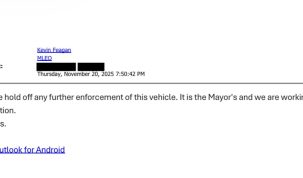By Cecilia Nasmith/Today’s Northumberland
At its Aug. 13 meeting, Northumberland County council will be asked to approve changing the low-barrier shelter at 310 Division St., Cobourg, into a higher-barrier one, following Wednesday’s meeting of its Social Services Committee.
The report from Associate Director of Housing and Homelessness Rebecca Carman described what this model might look like, as opposed to the low-barrier model on which the shelter has operated since it opened last November.
The model developed by staff “is rooted in housing-focused services, able to serve the most individuals needing emergency shelter within our community.”
Intakes will be based on “presentation” and a revised list of eligibility criteria that involve a bag-and-pocket search and diversion conversations.
Signs and symptoms of being under the influence of drugs and alcohol, escalated or disruptive behaviours will render a client ineligible.
An assessment will be done to determine level of acuity and support required within 48 hours, and a meeting to create a housing-focused case plan will take place within 72 hours.
Intake time and curfews will be clearly communicated, and anyone violating these expectations “will be considered self-discharged.”
The fire-safety plan will be updated, and gates will be installed across the driveway – to be closed after hours as a physical deterrent.
The 10 transitional-housing units on the fourth floor do not fall under this model, as the occupants were carefully chosen on the basis of being low-acuity and housing-ready. They pay rent and abide by an occupancy agreement.
Given actions required to achieve the new model (such as staffing complement and recruitment, finalized budget and amended agreements with Transition House staff), it is anticipated the new model can be in place some time in the fall.
Some savings will be achieved by not having a warming hub on the ground floor, though there will likely be the additional cost of transportation required to run a hub in an area outside of Cobourg – as the town’s Emergency Care Establishment bylaw does not permit more than two licenses at a time (such licenses currently held by the county for this facility and by Cornerstone Family Violence Prevention Centre).
Although Cobourg Mayor Lucas Cleveland is not a member of this committee, he has attended most of its meetings. Unable to attend this one, he sent his questions through Chief Administrative Officer Jennifer Moore. One of them questioned the development of a “higher-barrier” facility when he had understood the county would change it to a “high-barrier” one.
In his survey of shelters across the country, Homelessness Services Manager Bill Smith said he had not found one that is truly high-barrier.
“The idea of any emergency shelter is being able to service as many folks as possible,” Smith said.
Now that the ground floor is no longer used as a warming hub, Cleveland wondered, what would the ground floor be used for. It will just be space to come and go, Smith said, with some group work and programming already taking place there.
“If this is the model accepted, we will do a lot more housing-focused programming,” he added.
“We will use the kitchen around training for individuals in that space.
“There is no discussion of using the space for anyone but clients using those services.”
In other 310 Division St. business, Director of Health and Human Services Glenn Dees gave his last report on the use of the drop-in warming-cooling hub on the ground floor, as it was shut down July 4 by county-council resolution. Taking into account its final month, the hub has hosted an average of 28 clients per day since it opened Nov. 13.
Although 73% reported their location of affiliation as being somewhere in Northumberland County (53% of them from Cobourg), clients from outside the county had always been a sore spot for many.
Committee member Olena Hankivsky wondered if it’s the same case in other municipalities. Smith said it is very much the same elsewhere.
“They often talk about the Magic Bus moving homeless individuals from community to community,” he said, but the answers clients give to this question are very much subjective and dependent on how the question is put.
Carman reported on a lacklustre response from an outreach initiative – the monthly Business Pulse Survey that allows businesses to report on their experience with the shelter. While the June survey got 21 responses (though six were incomplete), there were only four responses to the July survey.
“Often survey fatigue takes place,” Carman said.
“We will see what August brings and, if we need to re-evaluate, we will re-evaluate.”























